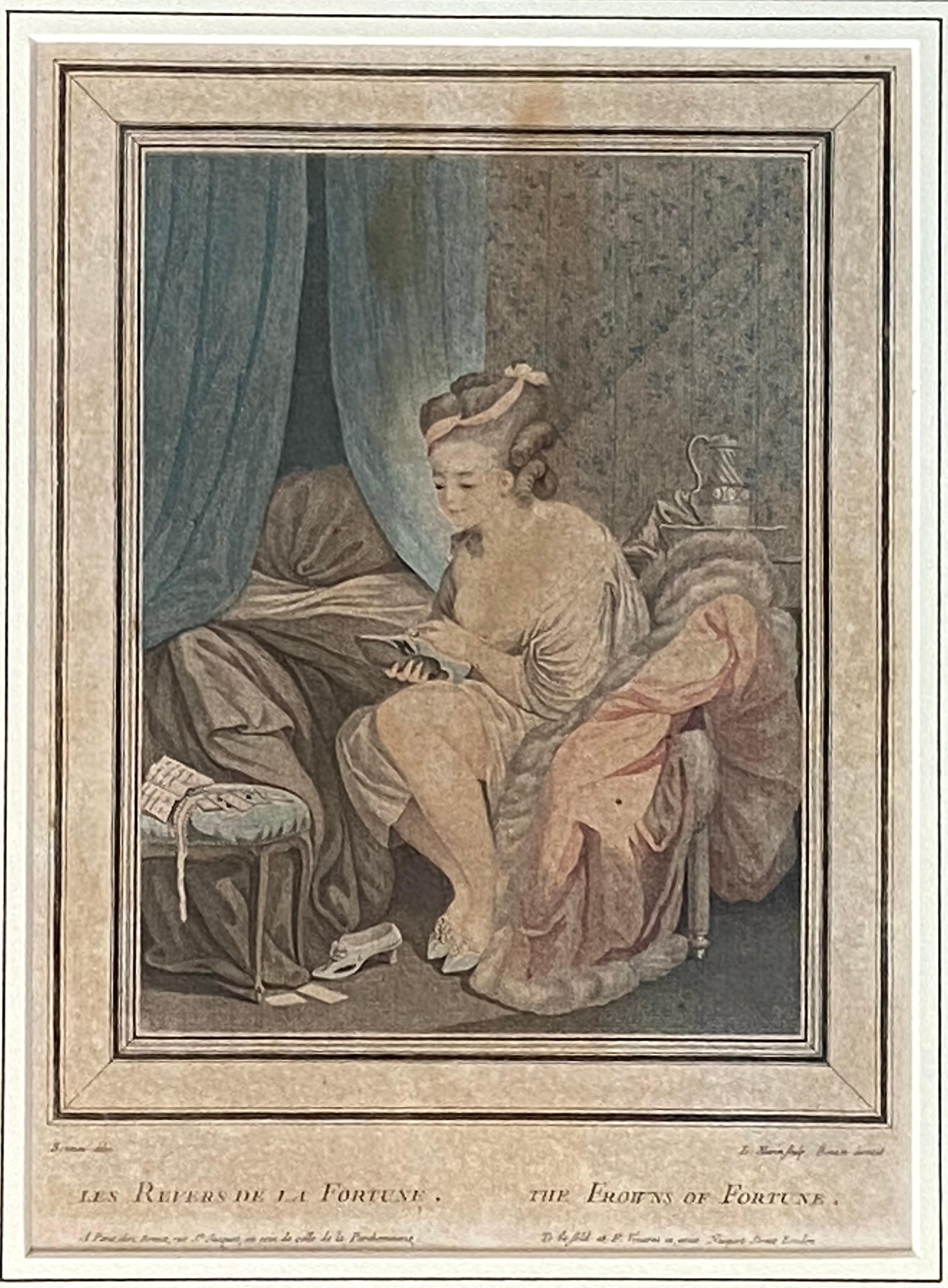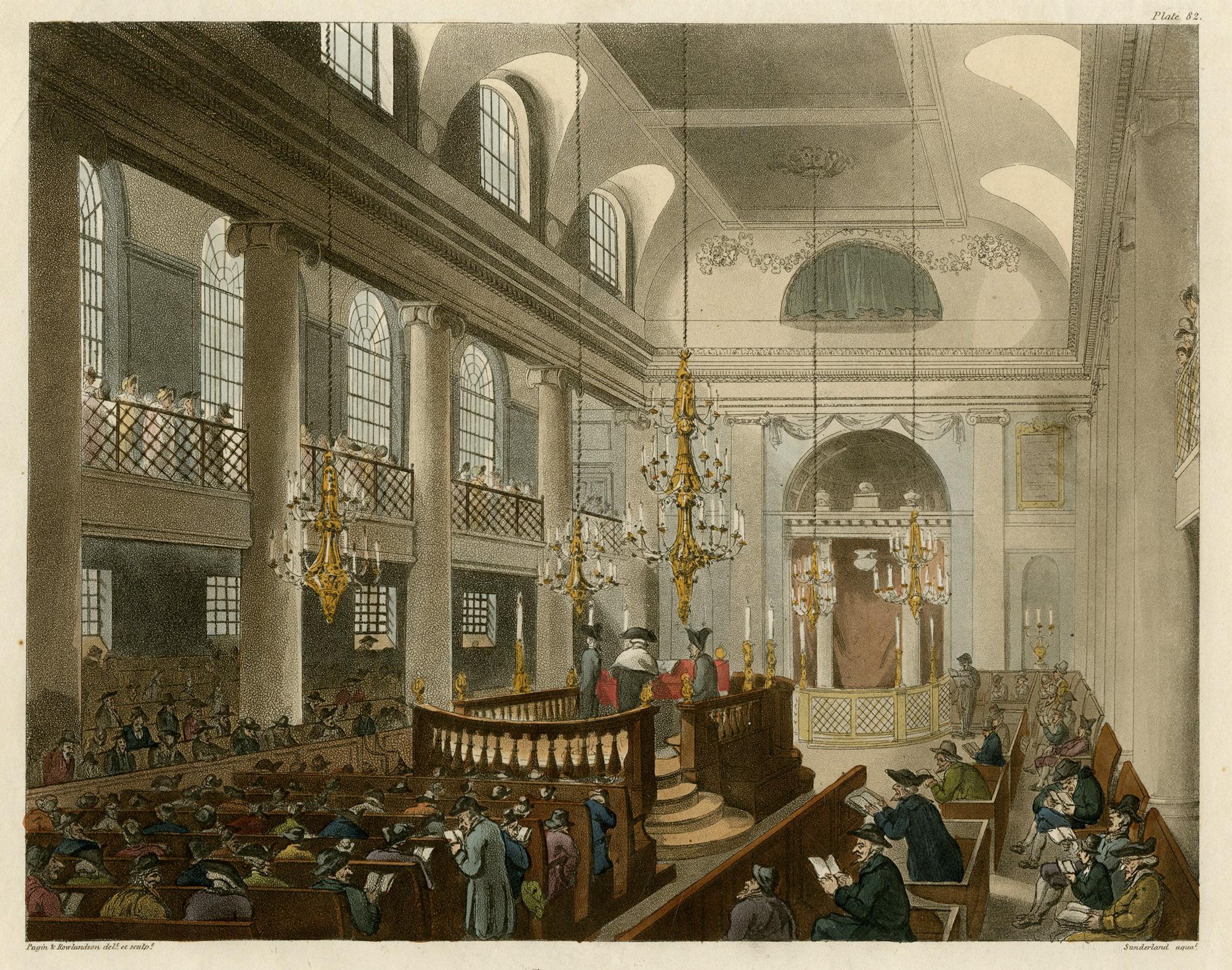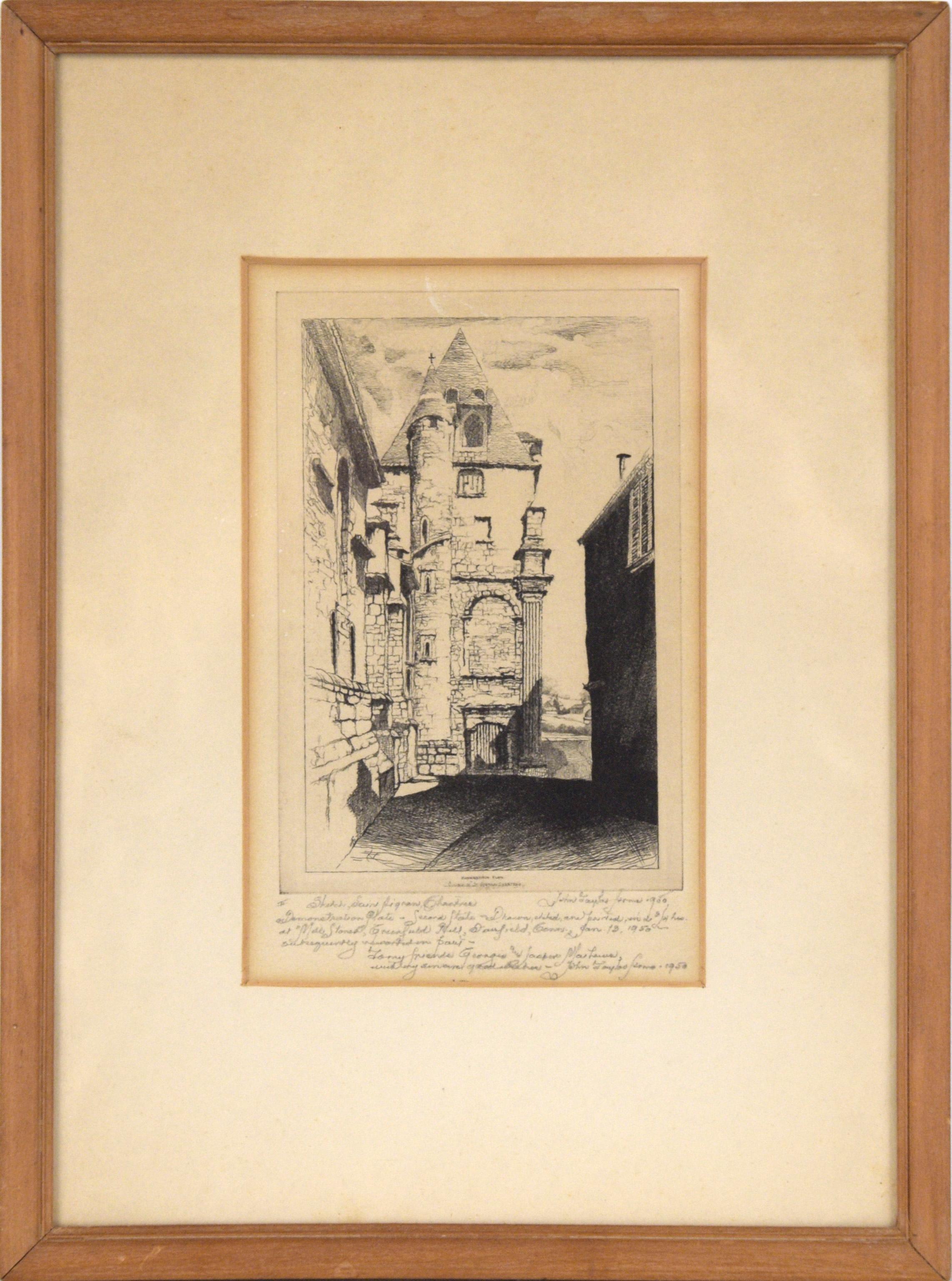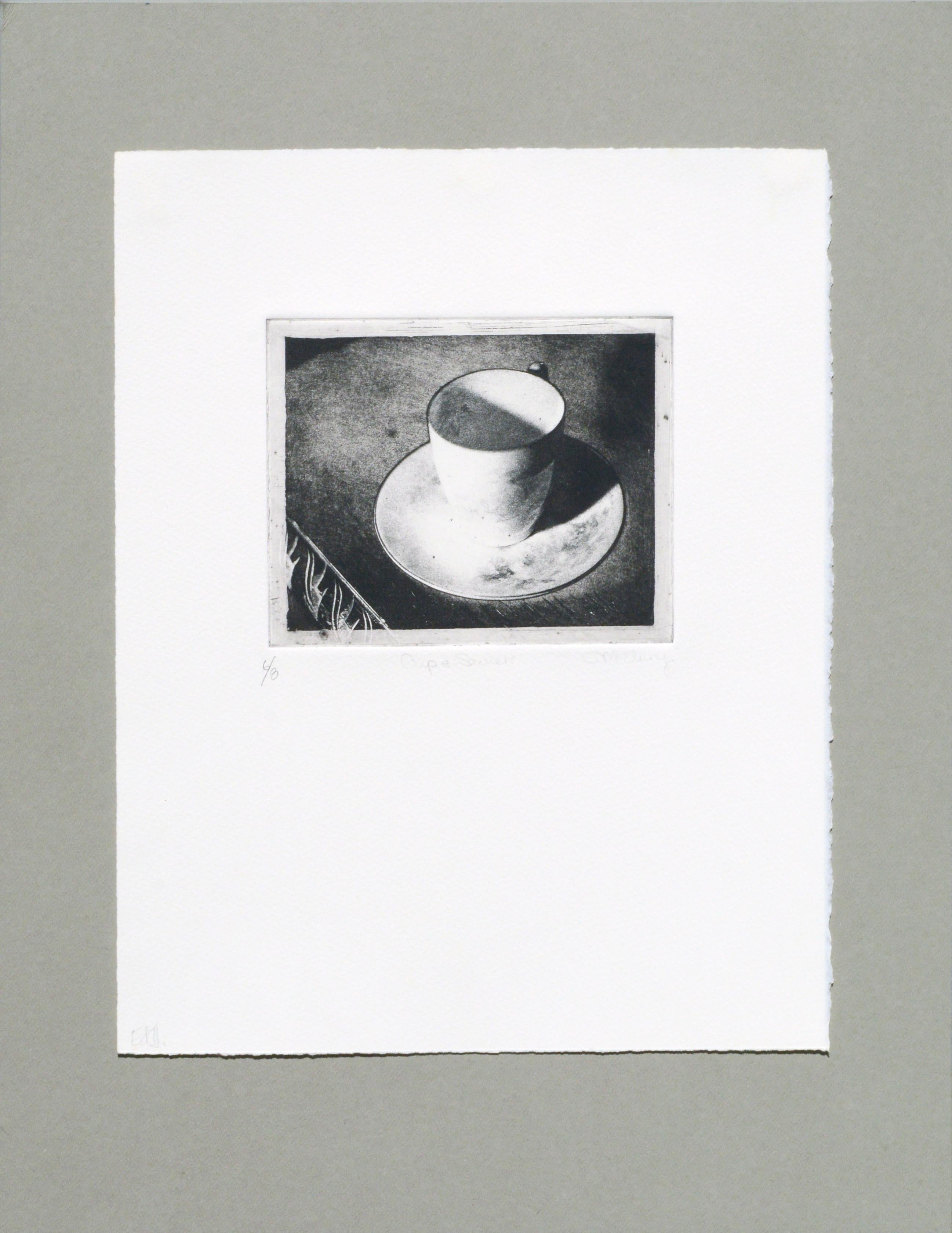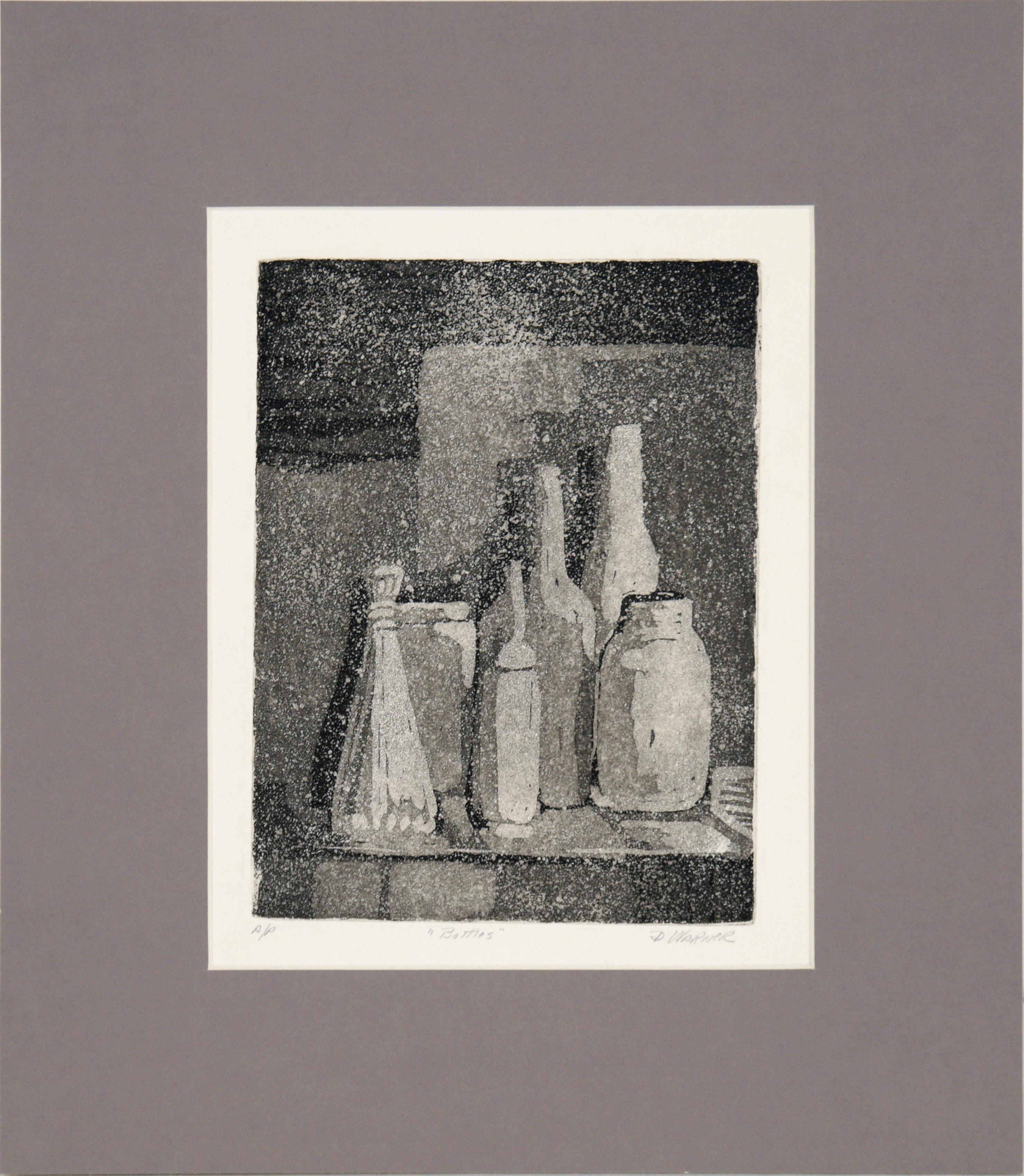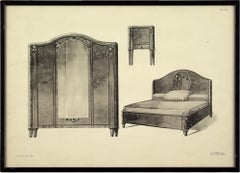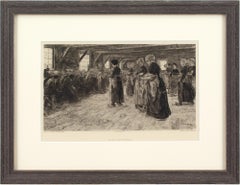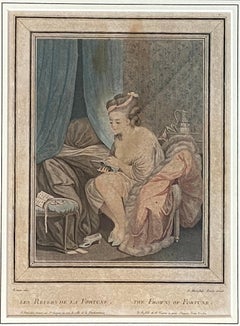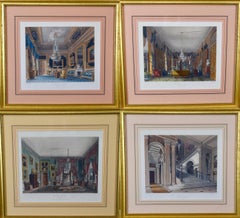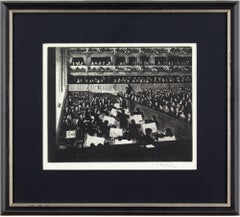
Wilfred Fairclough, Orchestra At The Royal Opera House, Etching
View Similar Items
Want more images or videos?
Request additional images or videos from the seller
1 of 13
Wilfred FaircloughWilfred Fairclough, Orchestra At The Royal Opera House, Etching1972
1972
About the Item
- Creator:Wilfred Fairclough (1907 - 1996)
- Creation Year:1972
- Dimensions:Height: 18 in (45.72 cm)Width: 19.5 in (49.53 cm)
- Medium:
- Movement & Style:
- Period:
- Condition:Artwork presents well.
- Gallery Location:Cheltenham, GB
- Reference Number:1stDibs: LU2328211674252
About the Seller
5.0
Platinum Seller
These expertly vetted sellers are 1stDibs' most experienced sellers and are rated highest by our customers.
Established in 2017
1stDibs seller since 2023
126 sales on 1stDibs
More From This SellerView All
- Paul & Vigier, Set Of Four Examples Of French Room Decoration, HeliogravuresLocated in Cheltenham, GBThis stylish set of four early 20th-century French heliogravures depict various combinations of bedroom furniture from the period. They were published by Paul & Vigier and provide an interesting glimpse into the fashionable world of Parisian interiors. Framed and glazed. Established in 2017, Brave Fine...Category
Early 20th Century Academic Interior Prints
MaterialsPhotogravure, Paper
- Otto Goetze, Interior With Standing Nude & Mirror, EtchingLocated in Cheltenham, GBThis early 20th-century etching by German artist Otto Goetze (1868-1931) depicts a nude within a bedroom setting. She poses while holding a mirror and catching her reflection. Goetze was a master of provocative scenes such as this. Seemingly obsessed with the female form, his skilful etchings portray women in various states of undress. It’s interesting to consider how tastes changed during the period he worked and how the line shifted between nudes as an artwork and the more overt world of eroticism. Swedish artist Anders Zorn (1860-1920) is one of the more prominent artists of this genre, particularly during the early 20th century. His earlier depictions of nudes were often portrayed under the guise of mythological subjects - wood nymphs and such - making them more palatable for display in the home. However, as time progressed, they were simply a celebration of form. Here, in around 1915, we see a work by Goetze that suggests a narrative. She’s perhaps looking at her hairstyle. Checking whether it’s ok from the reverse. She happens to be naked but within the boundaries of acceptable taste. Note how she’s without pubic hair...Category
Early 20th Century Impressionist Interior Prints
MaterialsPaper, Etching
- Albert Kruger After Max Liebermann, The Flax Barn at Laren, EtchingLocated in Cheltenham, GBThis late-19th-century etching by German draughtsman Albert Kruger (b. 1858) is after a painting by Max Liebermann (1847-1935). The rhythmical monotony of the spinners, organised like a rigid machine, echoes through the low barn. Youths, hunched by square windows, wind flax onto spindles. While women stand in clogged feet, working tirelessly with aching bones. Liebermann captured their daily grind with aplomb, avoiding sentiment in favour of laborious reality. Yet, amid this harsh environment, he celebrates their efforts. The composition conveys determination with its lines and strong verticals while the atmosphere is one of steel rather than tortuous circumstance. Liebermann was a realist yet he found light among the ordinary. Originally published in The Art Journal...Category
1890s Victorian Interior Prints
MaterialsEtching, Paper
- Henry Robert Robertson, Ave Maria, EtchingBy Henry Robert RobertsonLocated in Cheltenham, GBThis fine late 19th-century etching by British artist Henry Robert Robertson (1839-1921) depicts a couple worshipping a shrine to the Virgin Mary at sea. The original painting was ex...Category
19th Century Academic Landscape Prints
MaterialsPaper, Etching
- George Sidney Hunt After Edwin Long RA, In the Wilderness, EngravingLocated in Cheltenham, GBThis late 19th-century mixed-method engraving by George Sidney Hunt (1856-1917) after Edwin Long RA (1829-1891) is one in a series of three depicting the Old Testament story of Jephthah. Here, we see Jephthah’s daughter contemplating her fate during a two-month sojourn in the wilderness. The heart-rending story of Jephthah captured Victorian minds and inspired artist Edwin Long to produce three exhibition pieces, which are now held at the Russell Cotes Art Gallery & Museum. Prior to a fearsome battle with the Ammonites, Jephthah, a leader in Isreal, committed a vow to God that he’d make a sacrifice if his armies were triumphant. “whatever comes out of the door of my house to meet me when I return in triumph from the Ammonites will be the Lord’s, and I will sacrifice it as a burnt offering...Category
19th Century Academic Figurative Prints
MaterialsPaper, Engraving
- Henry Towneley Green, An Interesting Read, WatercolourLocated in Cheltenham, GBThis late 19th-century watercolour by English artist Henry Towneley Green (1836-1899) depicts two smartly attired gentlemen immersed in a fascinating book within a study interior. Th...Category
19th Century Academic Interior Drawings and Watercolors
MaterialsPaper, Watercolor
You May Also Like
- “Les Revers de la Fortune”Located in Southampton, NYOriginal stipple engraving with colors titled “Les Revers de la Fortune” (Reversal of Fortune) by the well known French engraver, Louis Marin Bonnet...Category
1780s Academic Interior Prints
MaterialsLaid Paper, Engraving
- Four 19th Century Hand Colored Engravings Depicting English Royal ResidencesBy Charles WildLocated in Alamo, CAFour hand colored etchings and aquatints depicting interiors within English royal residences, including "The Blue Velvet Room at Carlton House", "The Queen's Library at Frogmore", "T...Category
1810s Academic Interior Prints
MaterialsEngraving
- Room with Trees and Vegetation, Interior Photography, Photomontage, EtchingLocated in AIX-EN-PROVENCE, FRWork : Original Photogravure / Etching, Handmade Artwork, Limited Edition of 15. The work is not framed. Medium : Photopolymer Gravure on Fine Art paper 300Gsm Artist : Suzanne Moxh...Category
21st Century and Contemporary Contemporary Black and White Photography
MaterialsArchival Paper, Etching, Photogravure
- Synagogue Duke's Palace Houndsditch by Th. Sunderland after Pugin & RowlandsonBy Thomas RowlandsonLocated in Middletown, NYA faithful architectural rendering of the earliest Ashkenazi synagogue constructed in London; built about 1690, and subsequently destroyed in the Blitz, 1941. London: Rudolph Ackerm...Category
Early 19th Century English School Interior Prints
MaterialsAquatint, Engraving, Handmade Paper
- Judaica Jewish Shtetl Etching Hasidic Rabbi at Study Vintage Chassidic PrintBy Paul JeffayLocated in Surfside, FLOlder Chassidic rabbi learning with open book, Judaica, Jewish scenes from a ghetto. Saul Yaffie, a.k.a. Paul Jeffay, (1898–1957) was a Scottish Jewish artist. Known for his charming French street scenes as well as his judaica work. This is signed in the plate and dated 1931 in the print. This is done in a style similar to the works of the early Bezalel School artists Hermann Struck and Jakob Steinhardt. This lithograph, by artist Paul Jeffay depicts a Judaic Shtetl interior scene with great charm and sensitivity. Saul Yaffie was born in Blythswood, Glasgow on 29 April 1898. His mother was Kate Yaffie (née Karkonoski), and his father, Bernard Yaffie, was a master tailor. Like many Russian Jews, Kate and Bernard Yaffie fled persecution in Russia during a wave of anti-Jewish pogroms triggered by the assassination of Tsar Alexander II in 1881. Saul's father was naturalised as a British citizen by the time that Saul himself was three; a Bernard Yaffie is recorded as living at Abbotsford Place in the old Gorbals, where the young Saul spent the early years of his childhood. The Yaffies were not unique in their situation: the Gorbals was the centre of Scotland's Jewish community and home to a large proportion of Glasgow's immigrants throughout the early 20th century. Over time, there was a movement to some of the more affluent communities in Glasgow, such as Pollokshields and Garnethill, as many Jewish families gradually improved their social and economic situation. Like these, the Yaffies also experienced a time of good fortune, moving to a more agreeable address on Sinclair Drive, Cathcart as Bernard's tailoring business prospered. Saul attended day classes in drawing and painting, modelling, and life drawing at The Glasgow School of Art from 1912 to 1919. During the First World War, he was required to interrupt his studies to serve in the King's Own Scottish Borderers in 1916/17. Although subject to military conscription, Yaffie reached the rank of corporal during his service. Prior to his conscription Yaffie engaged in munitions work, something that was recorded in the GSA's student registers. The post-war economic depression that affected the country during the 1920s, also affected the Yaffie family directly: Bernard Yaffie's business suffered greatly, and the family eventually emigrated to Canada. Saul did not emigrate with his family, choosing instead to stay in Europe, and relocate to jazz age Paris where he continued his artistic practice. Now married, Saul sought to escape persecution in Europe by returning to the UK before the Second World War with his wife, Estusia. The two settled in Manchester, but returned to France after the war. In his memoires ‘Bronze in My Blood’, German-born sculptor Benno Schotz describes a Saul ‘Yaffe’, one of only three other Jewish students who attended The Glasgow School of Art at the time. (Schotz himself was exempt from joining the forces because he was ‘not yet a British subject’, and was engaged in war work in the drawing office of John Brown’s shipyards). On the outbreak of the war, Schotz writes, Yaffie won a poster competition to be displayed in Glasgow tramcars at the beginning of the 1914-18 war – his winning design depicted a woman with a child in her arms, fleeing from a fire behind her. While on leave from service, the young Saul told Schotz he had briefly been stationed in the same unit as Jewish American sculptor Jacob Epstein. This was most likely the 38th Battalion of the Royal Fusiliers, also known as ‘the Jewish Legion’, one of five Jewish battalions raised during WW1. ‘He told me how incongruous it was’, remembers Schotz, ‘to See Epstein scrubbing the floor of their hut, with a large diamond ring on his finger’. His work is included in the collection of the Ben Uri Museum in London along with Lucian Freud, David Bomberg, Mark Gertler, Josef Herman, Jankel Adler, Feliks Topolski...Category
20th Century Expressionist Figurative Prints
MaterialsPaper, Etching
- "Dark Box" Drypoint Etching with Aquatint (no. 10/20)Located in Soquel, CAFinely balanced etching by Benjamin Vasserman (Estonian, b 1949). A squash sits atop a small black box with a latch. There is a drapery behind the squa...Category
1980s Modern Interior Prints
MaterialsInk, Aquatint, Drypoint, Paper
$700 Sale Price20% Off
